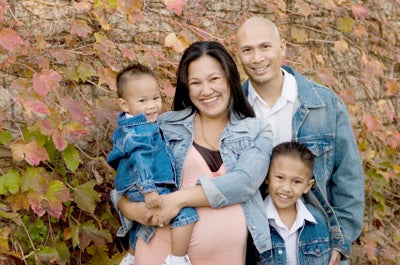
Gathering Information from Early Head Start and Head Start Staff and Families

Sensitive inquiry and observation
Most often, a mental health consultant is alerted to a concern about a child or family by Early Head Start and Head Start staff. Sometimes, during a regular classroom observation, the consultant will note a child whose behavior is concerning. In either circumstance, consultation — child and family centered consultation — always includes sensitive inquiry and observation. There can be particularly sensitive issues to explore in the case of children impacted by trauma, especially when a family member or other caregiver may be involved in the traumatizing event or circumstances. Consultants should consider the following when gathering trauma specific information:
- Observable signs, symptoms, behavioral concerns
- Child and family circumstances
- Family and staff perceptions/explanations of the child’s behavior
- Any recent change or event that may have contributed to the child’s behavior
- Any upsetting or traumatic event or history, if so describe who, what, when, where and what happened immediately after and since the traumatic event
- The child’s “story” about any recent change, traumatic event, or history
- How the client and family perceive the trauma and its effects from a cultural perspective
- Level of concern about the child’s response to trauma
- Level of disruption in the child’s functioning (social, emotional, behavior, etc.)
- How the child is coping and the child’s strengths
- Safety of the child, family, and their environment (see below)
- Openness to consultation or additional therapy services that might be helpful
Trauma focused screening instruments for use with young children are less well developed than those for older children. A place to start may be using the Early Head Start/Head Start intake assessment that for example, includes inquiry about domestic violence and safety in the home (Groves, 2007). Some standardized screening instruments may be useful in an initial phase of information gathering (such as the Child Behavior Check List (CBCL)), others are more likely to be part of a clinical intake assessment after referring the child and family for intervention services from a trauma-informed provider. Three examples that are more specific to trauma experiences, symptoms, and contextual history specific to trauma assessment for young children and families are (links open in new browser windows):
- Trauma Symptom Checklist for Young Children (TSCYC) (Opens in new tab) (Opens in new tab): A 90-item caretaker report instrument developed for the assessment of trauma related symptoms in children ages 3-12.
- Traumatic Events Screening Inventory — Parent Report Revised (TESI-PRR) (Opens in new tab) (Opens in new tab): This parent report inventory is available for children under 7 and inquires about a variety of traumatic events, including current and previous injuries, hospitalizations, domestic violence, community violence, disasters, accidents, physical, and sexual abuse. Each form takes 20 – 30 minutes to complete.
- Parenting Stress Index (Opens in new tab) (Opens in new tab): Available in two forms, this screening instrument measures stress in the parent-child relationship, identifies dysfunctional parenting and predicts the potential for parental behavior problems and child adjustment difficulties within the family system. While its primary focus is on the preschool child, the PSI can be used with parents whose children are 12 years of age or younger. The 101-item format takes 20-25 minutes for the parent to complete. The 36 item Short Form (PSI/SF) takes 10 minutes.
(Chadwick Center for Children and Families, 2009)
Determine the safety of the child, family, and their environment
In many trauma circumstances, one of the first tasks is to determine the safety of the child, the family, and their environment. Many Head Start programs have established a program-wide crisis response plan. Working in partnership with Early Head Start and Head Start staff, engage in information gathering and inquiry that focuses on:
- The immediate situation and circumstances
- Safety and security issues that must be addressed
- Any need for medical care or other protection from harm
- Any need for police, protective services (child welfare), shelter, or other emergency supports
- The availability of a safe place to live or stay temporarily
- Reliable and supportive family member(s) or friend(s)
- Other services or community agencies to provide resources and supports
- Concrete steps to take to remain safe and supported
- Follow-up and/or ongoing contact and services
Report suspected child abuse and neglect
Child abuse and neglect includes a variety of experiences that are considered to be traumatic to young children (physical, psychological, sexual abuse and physical neglect). It is a growing problem in the United States, a problem that occurs across all cultures and socio-economic levels, and can be viewed differently across cultures and time. The link between poverty, multiple family stressors, and lack of community supports for young children and families are particularly relevant to those served by Early Head Start and Head Start.
Early Head Start and Head Start staff, along with mental health consultants, play a powerful role in identifying and reporting evidence of abuse and neglect. Staff and consultants are mandated reporters of suspected abuse and neglect. Each Early Head Start and Head Start program is required to have a policy and procedure for documenting and filing a report of suspected abuse and neglect that complies with their specific state requirements. Be sure to request a copy from your Program Director or a staff member.
For children who have experienced the types of trauma associated with abuse and neglect, additional supports within the context of a caring environment in the early care and education setting may be needed.
- If the report is “unfounded” and the child remains in the home, consultation can assist staff with maintaining a relationship with the child’s family members.
- If the child is determined to be in immediate danger and is removed from his/her home and remains in the program, consultation can support staff efforts to help the child through the trauma of his/her experience, including separation from his/her family.
- If the child is withdrawn from the program, as much as possible, staff can assist that child (and family) with transition to another program or other community supports.
